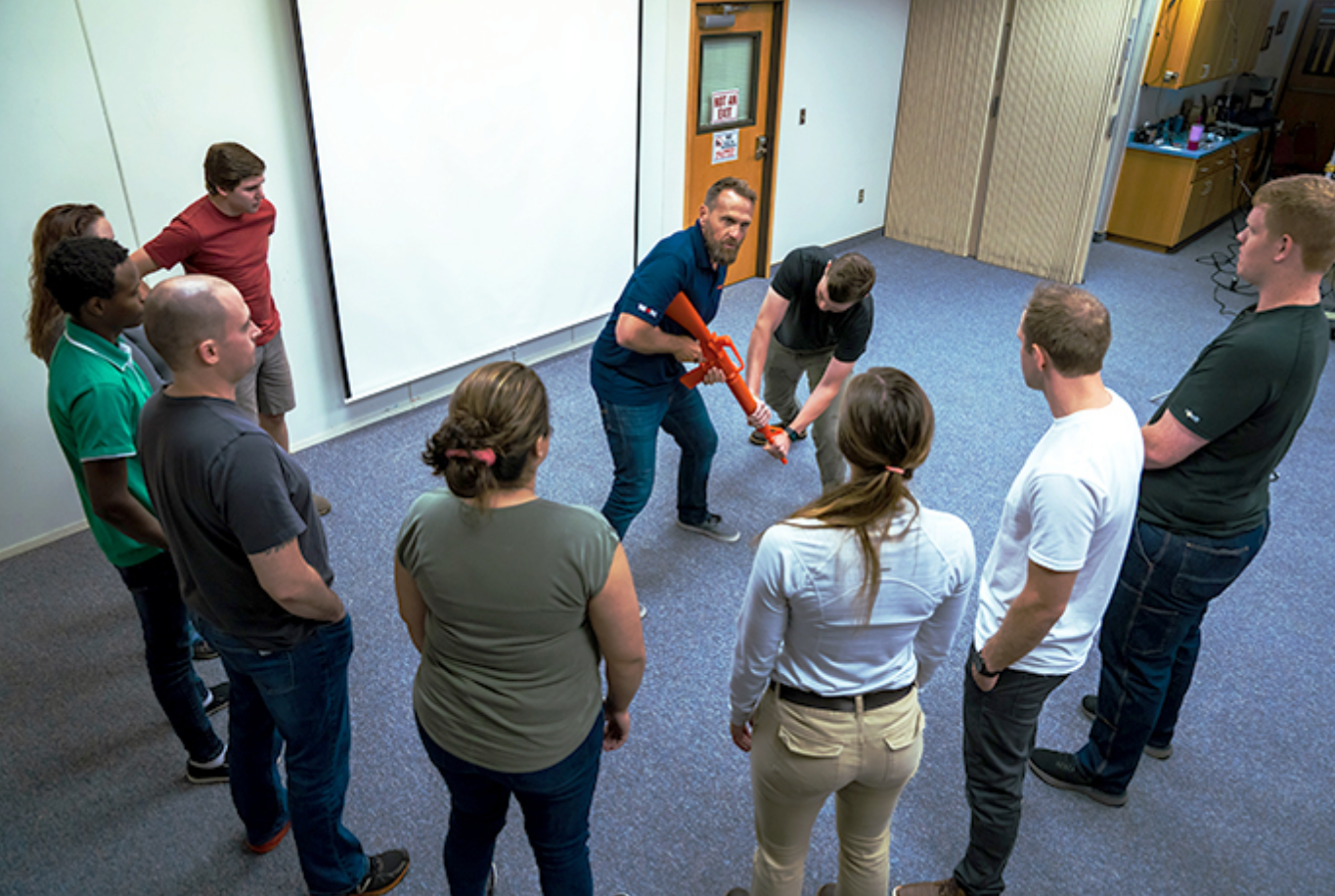Ideal Practices for Executing Active Shooter Training in Your Firm
Ideal Practices for Executing Active Shooter Training in Your Firm
Blog Article
Applying Energetic Shooter Training: Best Practices for Developing a Safe and Prepared Neighborhood Environment
As neighborhoods challenge the distressing reality of active shooter events, the implementation of extensive training programs comes to be necessary. An effective approach rests on not just the development of tailored curricula that address regional threats yet likewise the participation of varied stakeholders. By utilizing a selection of training methods, neighborhoods can ensure that all members are equipped with necessary skills. Nevertheless, the difficulty hinges on maintaining an adaptive framework that evolves with emerging threats. What are the essential aspects that can change a typical training program right into a durable version for neighborhood strength?

Comprehending the Need for Training
In a period noted by enhancing cases of violence in public rooms, recognizing the need for active shooter training has never ever been more important. Comprehensive training initiatives can furnish individuals with the knowledge and skills to respond emphatically.
Training cultivates a feeling of empowerment and preparedness, enabling individuals to feel more safe in their environments. The advantages of active shooter training prolong past prompt feedback; they include enhancing communication procedures and boosting total safety and security measures within companies.
Secret Parts of Effective Programs
Effective active shooter training programs include numerous crucial elements that improve preparedness and response capacities. Thorough educational program growth is essential, making sure that training content is pertinent, evidence-based, and customized to the specific requirements of the company or area. This includes understanding the dynamics of active shooter events and the psychological influence on individuals included.
Second, sensible training scenarios should be utilized to imitate possible situations, allowing participants to practice decision-making and reaction approaches in a regulated environment. These drills assist in muscular tissue memory and develop confidence amongst participants.
Third, an emphasis on communication protocols is crucial. Establishing clear lines of communication amongst police, emergency responders, and individuals ensures worked with reactions during an occurrence. Regular updates and correspondence course aid keep communication paths clear and efficient.
4th, recurring evaluation and responses systems must be incorporated right into the training program - active shooter training. Examining the efficiency of training via individual feedback and performance metrics enables continuous renovation
Finally, promoting a society of security and readiness within the area motivates vigilance and positive actions, making certain that people are not just qualified however likewise engaged in maintaining a secure atmosphere.
Engaging Community Stakeholders

To successfully engage these stakeholders, it is necessary to communicate the goals and advantages of the training. Holding informative sessions can help make clear the training's function, address concerns, and lay out the functions each stakeholder may play. Creating a stakeholder consultatory committee can promote continuous discussion, permitting for diverse perspectives and insights to be incorporated into the training program.
Structure connections with neighborhood leaders and companies is additionally critical. Their assistance can improve outreach initiatives, rise engagement, and guarantee that training is tailored to the distinct demands of the community. In addition, stakeholders can aid in disseminating information and sources, reinforcing the message of security and preparedness.
Ultimately, involving neighborhood stakeholders not only reinforces the training initiative yet also cultivates a feeling of possession among residents, bring about an extra resilient and informed community qualified of reacting effectively to potential risks.
Training Distribution Techniques
Utilizing a variety of training delivery techniques is vital to accommodate the varied understanding styles and needs of individuals in active shooter training programs (active shooter training). Effective training can take numerous forms, consisting of lectures, hands-on simulations, on-line components, and interactive workshops. Each approach serves an one-of-a-kind function and can boost the overall learning experience

Online modules use flexibility and ease of access, making it possible for participants to learn at their own rate. These can include video clips, quizzes, and discussions to evaluate understanding. Interactive workshops urge group conversations and analytical, promoting synergy and communication skills.
Including a blended technique that incorporates these methods not just enhances the training experience however also makes certain that individuals are much better prepared to respond efficiently in case of an active shooter circumstance (active shooter training). By dealing with different discovering choices, companies can create a much more educated and responsive community
Constant Evaluation and Improvement
Regular analysis and improvement of active shooter training programs are crucial to keeping their significance and effectiveness. As threats evolve, so need to the methods and methodologies see this website employed in training. Continuous assessment ensures that training content reflects the most recent intelligence on energetic shooter cases, including lessons gained from recent occasions and readjusting for arising trends.
To promote this procedure, companies must develop feedback mechanisms that include individual assessments, professional evaluations, and occurrence debriefs. Collecting information on individual efficiency throughout drills and workouts is crucial, as it highlights areas requiring important link improvement and informs future training sessions. Furthermore, involving with police and emergency responders can offer beneficial insights right into the practicality and applicability of training protocols.
Routinely set up evaluations of training materials and methods need to be mandated, promoting a setting of technology and versatility. Organizations must likewise encourage a society of ongoing discovering, where employee feel equipped to recommend modifications based upon their experiences. By committing to constant assessment and renovation, organizations not only enhance the effectiveness of their energetic shooter training programs however likewise strengthen their overall dedication to security and readiness within the community.
Final Thought
Finally, reliable application of active shooter training requires a thorough approach that prioritizes community involvement and practical simulations. By establishing customized educational programs, including diverse training approaches, and promoting cooperation amongst stakeholders, communities can improve readiness. Continuous assessment and responses devices are important for adjusting programs to arising threats, consequently enhancing total safety. Eventually, a dedication to ongoing training and improvement grows a culture of watchfulness and preparedness, guaranteeing a safer setting why not check here for all community participants.
Report this page